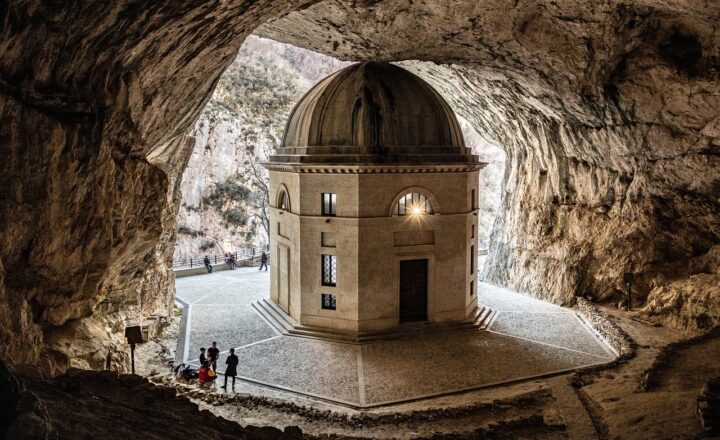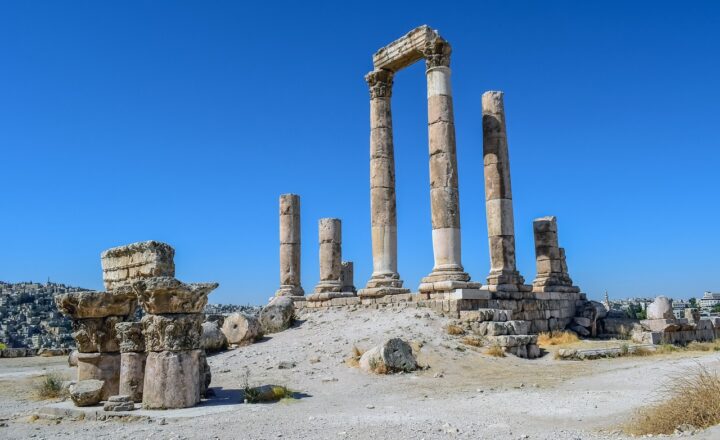How the Concept of Sacred Geometry Influenced the Design of Temples, Cathedrals, and Monuments
November 17, 2024

Sacred geometry is a fascinating interplay between mathematics, spirituality, and art, where geometric shapes and patterns hold symbolic meanings and represent the universe’s fundamental forms. The concept has influenced various cultures throughout history, particularly in the design of temples, cathedrals, and monuments, where the alignment, layout, and proportions of these structures often embody deeper philosophical or cosmological principles.
1. Understanding Sacred Geometry
Sacred geometry refers to the geometrical laws that create everything in existence, structures, and patterns seen in nature, art, and architecture. This ancient belief system suggests that certain shapes and proportions have universal significance and divine qualities. These geometric patterns often convey spiritual truths and connect the physical world with the metaphysical.
Common shapes and concepts of sacred geometry include:
- The Golden Ratio: An important mathematical ratio (approximately 1.618) that appears in various natural phenomena and is often seen in art and architecture as a framework for aesthetically pleasing designs.
- The Flower of Life: A geometric figure composed of multiple evenly-spaced overlapping circles, symbolizing the interconnectedness of life and the universe.
- Fibonacci Sequence: A sequence of numbers where each number is the sum of the two preceding ones, which also reflects growth patterns found in nature, emphasizing the connection between mathematics and organic forms.
These foundational shapes and principles have been integrated into religious and monumental architecture around the world, reflecting a universal search for beauty and understanding of the cosmos.
2. Sacred Geometry in Ancient Temples
Throughout history, ancient cultures have incorporated sacred geometry into their temples. One notable example is the Egyptian pyramids. The Great Pyramid of Giza, built around 2580-2560 BC, exhibits precise alignment with the cardinal points, showcasing the application of geometry in its construction. The pyramid’s proportions relate to various mathematical constants, including the Golden Ratio, which is believed to symbolize the connection between the earth and the cosmos.
Similarly, the temples of Angkor Wat in Cambodia reflect sacred geometry through their layout. The central tower represents Mount Meru, the center of the universe in Hindu and Buddhist cosmology, while the moat surrounding the temple complex symbolizes the oceans.
3. The Influence of Sacred Geometry on Cathedrals
The grandeur of Gothic cathedrals demonstrates how sacred geometry plays a significant role in Christian architecture. Structures like Notre Dame de Paris and Chartres Cathedral incorporate the principles of sacred geometry in their designs. The pointed arches, ribbed vaults, and flying buttresses all reflect mathematical precision, creating an environment for spiritual reflection and connection.
Chartres Cathedral, for example, is renowned for its use of the sacred geometry of the labyrinth, which is a metaphor for life’s journey towards salvation. The spiral design invites worshippers to contemplate their spirituality, connecting them to ancient truths through a geometric representation of life.
Additionally, the arrangement of the cathedral’s floor plan often reflects the use of geometric shapes such as the cross, symbolizing Christ’s crucifixion, and further emphasizing the importance of geometry in conveying religious narratives.
4. Monuments and Sacred Geometry
Several significant monuments also illustrate the use of sacred geometry to convey meaning. One of the most famous examples is Stonehenge in England. This prehistoric monument is composed of circular earthworks, stones, and human-made features arranged in a way that aligns with astronomical events like solstices and equinoxes. The circular formation signifies a connection with the cyclical nature of time and the cosmos.
In modern times, the United States Capitol Building in Washington, D.C., showcases the impact of sacred geometry. The dome’s proportions and the building’s symmetry embody classical principles of geometry, demonstrating a respect for the ancient traditions that inform the design of government and civilization.
5. The Legacy of Sacred Geometry in Design Today
As society progresses, the principles of sacred geometry have not faded but have evolved in contemporary architecture, art, and environmental design. Modern architects often refer back to these ancient geometrical principles to create spaces that resonate on both aesthetic and symbolic levels. By utilizing mathematical ratios and geometric forms, they strive to give their designs a transcendental quality, fostering an emotional connection similar to those achieved in ancient structures.
Some modern examples include:
- The Eden Project in Cornwall: This environmental center employs geodesic domes based on geometric principles, emphasizing sustainability and connection to nature.
- The Guggenheim Museum in Bilbao: Designed by Frank Gehry, this structure incorporates organic forms and flowing lines, derived from sacred geometry, creating a dynamic relationship with its environment.
As understanding of sacred geometry continues to develop, architects and artists are increasingly using these ancient principles to create sustainable, harmonious designs that connect us to nature and to each other.
Conclusion
The influence of sacred geometry in the design of temples, cathedrals, and monuments reflects humanity’s enduring quest for connection with the cosmos and the metaphysical. These architectural marvels, rooted in mathematical principles, serve as powerful symbols that transcend generations, cultures, and religions. In understanding and appreciating sacred geometry, we not only appreciate the aesthetics of these structures but also recognize their underlying significance—our pursuit of beauty, harmony, and understanding of the universe.







